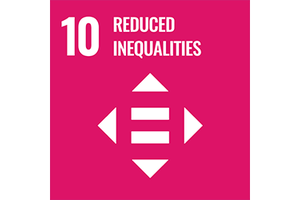SCSE, Duluth
Study reveals new information about wildfire impact to lakes
NRRI researchers find that size of fire matters less than intensity of the blaze. Wildfires in northern Minnesota are increasing – the number, the size and the intensity. Within most folks' memories are the Ham Lake Fire (2007), Pagami Creek Fire (2012) and most recently, the Greenwood Fire (2021). Each scorched large swaths of the state’s prized wilderness areas and challenged humans who were too close.
MPR News - Heart work: Training social workers to keep Native children home
The Indian Child Welfare Act was designed to counteract decades of policies and systems that uprooted Native American children from their families and culture. Minnesota has its own version of the law, called the Minnesota Indian Family Protection Act and UMD has a training program for social workers called the Tribal Training and Certification Partnership.
CBS News: All Minnesota worms are invasive, but which ones do you need to worry about? An expert weighs in
WCCO interview with Ryan Hueffmeier at the University of Minnesota's Boulder Lake Environmental Learning Center. Who has been studying worms for almost two decades with the Great Lakes Worm Watch program.
Talking potholes with U of M
Manik Barman discusses what causes potholes, the work that goes into fixing them and how drivers can stay safe on uneven roads.
UMD Dining Services accelerates shift toward plant-based menus
UMD is one of 12 universities partaking in a new Purpose-Driven Plant-Based Incubator™ program.
MnDRIVE Aims to Spark New Collaborations into Sustainable Plastics
Researchers at the University of Minnesota and their counterparts in industry are discussing new ways to work together in search of solutions for the mounting problem plastic waste poses across the globe.
Research for cleaner water
Explore how UMD researchers are taking on the challenge of researching microplastics in the environment.
Protecting local water has global benefits
A paper in the online issue of Nature Communications demonstrates why keeping local lakes and other waterbodies clean produces cost-effective benefits locally and globally.
Researchers explore the application of Biochar and Iron-Enhanced Sands in septic systems
Of the 600,000 subsurface sewage treatment systems processing over 40 billion gallons of wastewater per year in Minnesota, estimates put 25% of these SSTS on or near shoreland.
MPR: Digging into Minnesota's peat, an under-appreciated climate superhero
MPR reporter joins a team of researchers from the Nature Conservancy and the University of Minnesota to learn more about their efforts to mitigate climate change.







